
Food preservation includes processes that make food more resistant to microorganism growth and slow the oxidation of fats. This slows down the decomposition and rancidification process. Food preservation may also include processes that inhibit visual deterioration, such as the enzymatic browning reaction in apples after they are cut during food preparation. By preserving food, food waste can be reduced, which is an important way to decrease production costs and increase the efficiency of food systems, improve food security and nutrition and contribute towards environmental sustainability. For instance, it can reduce the environmental impact of food production.

Food drying is a method of food preservation in which food is dried. Drying inhibits the growth of bacteria, yeasts, and mold through the removal of water. Dehydration has been used widely for this purpose since ancient times; the earliest known practice is 12,000 B.C. by inhabitants of the modern Middle East and Asia regions. Water is traditionally removed through evaporation by using methods such as air drying, sun drying, smoking or wind drying, although today electric food dehydrators or freeze-drying can be used to speed the drying process and ensure more consistent results.

Spirulina is the dried biomass of cyanobacteria that can be consumed by humans and animals. The three species are Arthrospira platensis, A. fusiformis, and A. maxima.
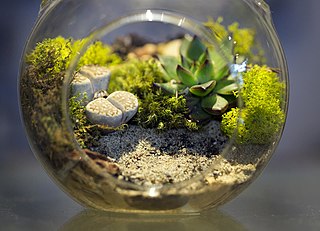
A vivarium is an area, usually enclosed, for keeping and raising animals or plants for observation or research. Water-based vivaria may have open tops providing they are not connected to other water bodies. An animal enclosure is considered a vivarium only if it provides quality of life through naturalistic components such as ample living space and natural decor that allow and encourage natural behaviours. Often, a portion of the ecosystem for a particular species is simulated on a smaller scale, with controls for environmental conditions such as temperature, humidity and light.
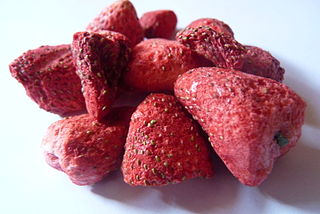
Freeze drying, also known as lyophilization or cryodesiccation, is a low temperature dehydration process that involves freezing the product and lowering pressure, thereby removing the ice by sublimation. This is in contrast to dehydration by most conventional methods that evaporate water using heat.

Conching is a process used in the manufacture of chocolate whereby a surface scraping mixer and agitator, known as a conche, evenly distributes cocoa butter within chocolate and may act as a "polisher" of the particles. It also promotes flavor development through frictional heat, release of volatiles and acids, and oxidation. The name arises from the shape of the vessels initially used which resembled conch shells.

Food technology is a branch of food science that addresses the production, preservation, quality control and research and development of food products.

Aquarium fish feed is plant or animal material intended for consumption by pet fish kept in aquariums or ponds. Fish foods normally contain macronutrients, trace elements and vitamins necessary to keep captive fish in good health. Approximately 80% of fishkeeping hobbyists feed their fish exclusively prepared foods that most commonly are produced in flake, pellet or tablet form. Some fish foods also contain additives such as sex hormones or beta carotene to artificially enhance the color of ornamental fish.
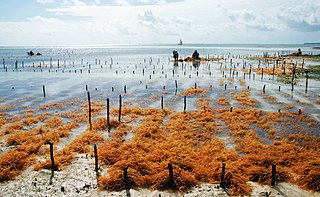
Algaculture is a form of aquaculture involving the farming of species of algae.

Live food is living animals used as food for other carnivorous or omnivorous animals kept in captivity; in other words, small preys fed alive to larger predators kept either in a zoo or as a pet.
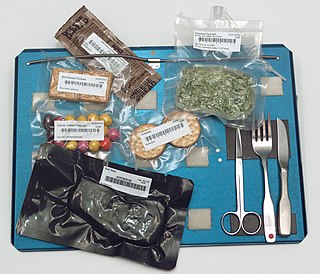
Space food is a type of food product created and processed for consumption by astronauts during missions to outer space. Such food has specific requirements to provide a balanced diet and adequate nutrition for individuals working in space while being easy and safe to store, prepare and consume in the machinery-filled weightless environments of crewed spacecraft. Space food is commonly freeze-dried to minimize weight and ensure long shelf life.

Tetra or the Tetra Werke (Company) is a fish food manufacturing company founded by a young German scientist, Dr. Ulrich Baensch.

The yellow mud turtle, also commonly known as the yellow-necked mud turtle, is a species of mud turtle in the family Kinosternidae. The species is endemic to the Central United States and Mexico.
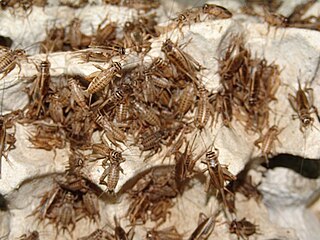
Insect farming is the practice of raising and breeding insects as livestock, also referred to as minilivestock or micro stock. Insects may be farmed for the commodities they produce, or for them themselves; to be used as food, as feed, as a dye, and otherwise.
Shrimp mix, also known as European shrimp mix, is a frozen fish feed used for fish with special dietary requirements, e.g. Tropheus, which are difficult to maintain using normal fish feed. The basic version is intended for herbivorous fish and is made by blending equal amounts of whole shrimp and green peas to a smooth paste, adding a vitamin supplement, and using either agar-agar or gelatin as binder. There are numerous variants tailored to the specific needs of different species. Common variants replace part of the shrimp or peas with fish meat, spinach, spirulina, or mussel meat, and add astaxanthin, ascorbic acid, or garlic.

Insects as food or edible insects are insect species used for human consumption. Over 2 billion people are estimated to eat insects on a daily basis. Globally, more than 2,000 insect species are considered edible, though far fewer are discussed for industrialized mass production and regionally authorized for use in food. Many insects are highly nutritious, though nutritional content depends on species and other factors such as diet and age. Insects offer a wide variety of flavors and are commonly consumed whole or pulverized for use in dishes and processed food products such as burger patties, pasta, or snacks. Like other foods, there can be risks associated with consuming insects, such as allergic reactions. As commercial interest in insects as food grows, countries are introducing new regulatory frameworks to oversee their production, processing, marketing, and consumption.

Manufactured feeds are an important part of modern commercial aquaculture. They provide the balanced nutrition needed by farmed fish. The feeds, in the form of granules or pellets, give nutrition in a stable and concentrated form, enabling the fish to feed efficiently and grow to their full potential.

Extrusion in food processing consists of forcing soft mixed ingredients through an opening in a perforated plate or die designed to produce the required shape. The extruded food is then cut to a specific size by blades. The machine which forces the mix through the die is an extruder, and the mix is known as the extrudate. The extruder is typically a large, rotating screw tightly fitting within a stationary barrel, at the end of which is the die.
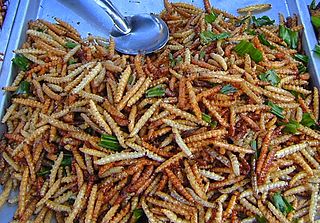
The welfare of farmed insects concerns treatment of insects raised for animal feed, as food or pet food, and other purposes such as honey and silk.
Cricket flour is a protein-rich powder made from crickets, using various processes. Cricket flour differs from true flours made from grains by being composed mainly of protein rather than starches and dietary fiber.

















